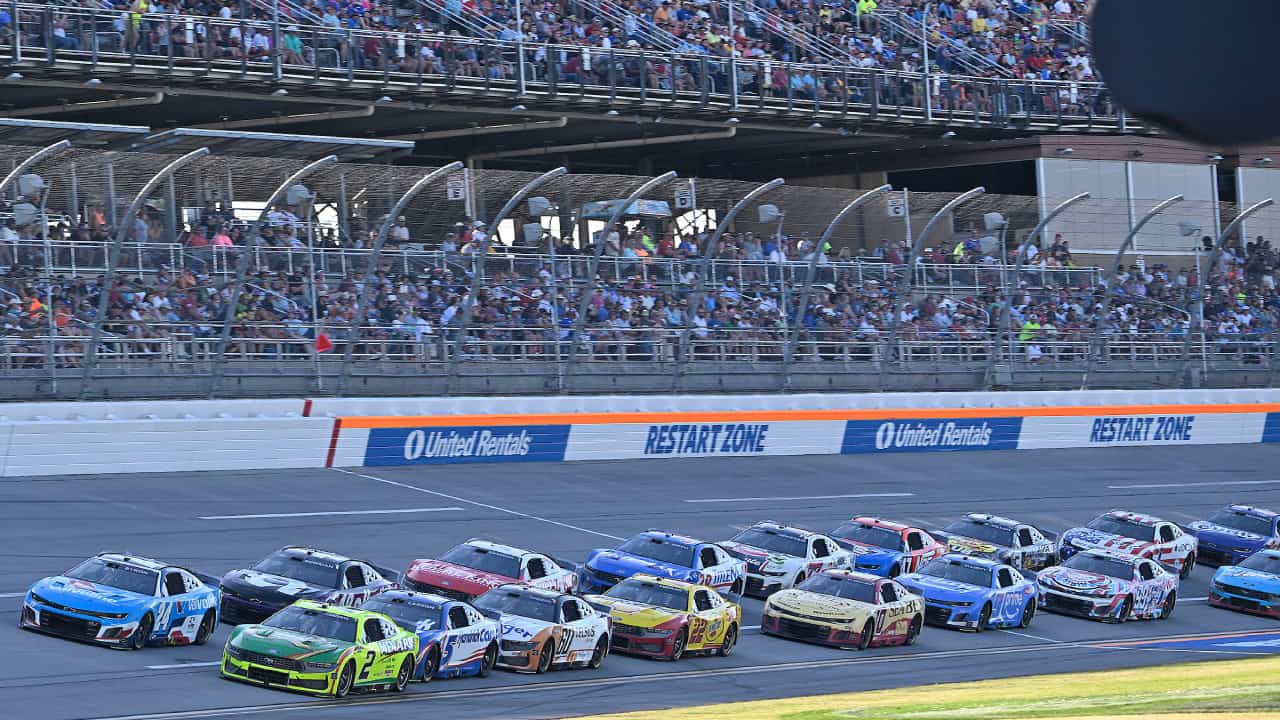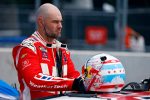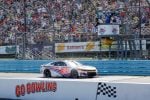This past weekend at Watkins Glen International saw a familiar song-and-dance in the NASCAR Cup Series.
Crazy racing on the initial start and restarts, including lots of aggression and contact, but then the field gets single file and locks into place. While there is passing, it is due to mixed tire strategies and a high amount of chrome horn usage. Shane van Gisbergen waltzes to the win by 11 seconds over Christopher Bell.
The 11-second margin of victory is not a problem by itself. Sometimes, a driver just whoops the field into oblivion, and van Gisbergen is this generation’s Ron Fellows, Boris Said and Scott Pruett. He is, for a lack of a better word, inevitable on lefts and rights.
His talent level on road courses is leaps and bounds ahead of his peers, including AJ Allmendinger. It is remarkable to see, and we are witnessing a different type of greatness not seen since Fellows, Said and Pruett. That should, and must, be appreciated.
That being said, it’s what happens behind the race leader that is the problem — sometimes even including the leader.
When it’s driver against driver, on equal conditions, they cannot pass.
Dirty air is not a new concept. It’s been around for decades and has persisted through several generations of stock cars.
Nascarman on X (@nascarman_rr) posted an article from 2002 about dirty air complaints that includes the quote, “I can’t imagine the aero push being any worse than it was today.”
I can say, without question, that now it’s the worst it’s ever been.
One week ago at Iowa Speedway, it took Brad Keselowski almost 40 laps to pass William Byron for the lead in stage one. Byron himself was stuck behind the 35th-place car for almost as long. Iowa is a track with at least two distinct grooves, and cars should not be stuck behind each other, gridlocked.
We saw this over and over. Keselowski would get a run on the No. 24, get to his back bumper, then immediately wash up the track, losing half a second or more. It took him multiple laps to get back to the same point, where it would inevitably happen again.
The NASCAR Next Gen car is the culprit. It is easier to defend than attack, which is a direct counter to how racing should be. Denny Hamlin won at Dover Motor Speedway in 2024 in the same manner. Whenever Kyle Larson got a run in the final laps, Hamlin just ran in his line, which forced Larson to lift repeatedly. That cost him time and, ultimately, the win.
It’s also why restarts are iRacing C class levels of aggressive. They are, most of the time, the only opportunity for drivers to pass each other on equal footing. Drivers bump each other and wreck each other because they have to drive into the corners much harder than with any other generation of car. There is no packing of air on the spoiler anymore, because the cars are symmetrical in the rear. Side force is almost nonexistent. The dirty air factor is so enormous that they can’t even get to the bumper of the driver ahead of them.
Quality passes are a metric that tracks how many top-15 passes there are in a race under green flag conditions. The Cup race this past weekend had by far the lowest average percentage of passing of the top three series, at least among the top-10 finishers.
This isn’t a coincidence. It certainly coincides with the eye test, however. Whenever drivers tried to pass, most of the time, dirty air forced them back several car lengths, and it would take them a lap or two to try again. That’s not racing. It’s Kansas Speedway 2020, but everywhere instead of just intermediates.
It’s also easier for the leader to save fuel than any other driver in the field. Byron and Chase Briscoe both did an outstanding job and fully earned their wins via fuel conservation, but both drivers were faster saving fuel than their peers who were racing at full song. Hamlin tried to pass Briscoe multiple times at Pocono, but the dirty air still wouldn’t let him by.
The leader can slow their pace down considerably, and the drivers behind are still stuck. This car, no matter who is the leader, gives the person in first place an enormous advantage. In an ideal world, if second place is faster, most times they should pass the leader, and only the best drivers hang on.
Which brings me to skill. This car, at its core, neuters the ability for drivers to showcase their skill. Daytona International Speedway and Talladega Superspeedway have become two-lane trains, where everyone is slam-drafting their way around the track. It’s game over for anyone who dares jump out of line due to the drag being as high as it is.
The Gen 6 car had its problems near the end (550-hp package, woof), but drivers could change lanes, fill gaps and take runs that happen. The 2021 spring race at Talladega is a great race to rewatch. Go back to that race, then compare it to this year’s rendition. The two-by-two went so far back (when they weren’t fuel saving) in this year’s contest that I became a train enthusiast.
There’s no skill involved in that, and this car has turned what was originally part crapshoot, part skill, into something that is almost entirely based on track position and luck. Just watch the finish from this spring.
Short tracks are victim to this car as well. I never used to dread Bristol Motor Speedway and Martinsville Speedway. They were two of the hottest tickets on the calendar, but not right now. Dirty air is still happening at short tracks, for Pete’s sake. That should never, ever happen.
What should happen is physical, full contact racing, but drivers literally cannot get to each other on equal tires at these tracks. They’re close to each other, but they cannot move without full-sending it and binning themselves or their competition.
The spring 2022 race at Martinsville was 400 qualifying laps. Everyone was running the same speed all night, which is another problem.
This car makes everyone way too equal. Close racing is not the same as good racing. Yes, the cars look really close at Bristol, but they can’t pass each other. There’s not enough horsepower, which makes corner speeds too high, yet straightaway speeds too low. Don’t just take my word for it — a future first-ballot NASCAR Hall of Famer said the same thing.
"The Cup cars need to go WAY faster." @KevinHarvick wants more horsepower! pic.twitter.com/aSkkNn78M1
— HarvickHappyHour (@HarvickHappyPod) August 5, 2025
Tires being too wide make the car easier to drive. Brakes being bigger removes brake conservation from the conversation, especially at short tracks. The driver has fewer tools in their toolbox to actually race. SMT data sharing is another problem, but that is a separate conversation to have.
The NASCAR Xfinity Series clears the premier division at most places. That’s like saying the G League is more exciting than the NBA. Every other sport would be laughed at for even insinuating that, but it is the truth here.
In a perfect world, the Xfinity car would be the Cup car too. Obviously, that will not happen anytime soon due to the enormous cost of making the switch, which would be in the tens, if not hundreds, of millions of dollars. The next best thing is to tweak the Next Gen to give it a fighting chance.
Softer tires are a good start, but we must go further. Racing mechanic, crew member and journalist Bozi Tatarevic has a great foundation beyond that.
Everyone is running the same speed because all the cars are the same. Dirty air is so bad that nobody can pass five laps after a restart, which leads to drivers racing without respect, something that’s being replicated in the lower divisions.
When racing is bad at one track, OK, maybe that track just had a rough go or something. Things like Martin Truex Jr.‘s 2018 Kentucky Speedway domination happen from time to time.
When racing is bad at all tracks but six (EchoPark Speedway, Kansas Speedway and Charlotte Motor Speedway, as well as Homestead-Miami Speedway, Las Vegas Motor Speedway and Michigan International Speedway), you have a car problem. It is not the track’s fault that the Cup car puts on a stinker at almost 75% of places it goes to.
It’s important to clarify that this car is not bad everywhere. It deserves some just due, as it has consistently put on good racing at the six tracks mentioned above, but those are the only six. Intermediates and bigger ovals have improved at the expense of just about everywhere else.
I want to see great racing. At its best, NASCAR is absolutely beautiful to watch. There’s nothing like it. What we have seen instead is drivers being handicapped by the car that they race each week.
And it’s devastating to watch as someone who loves this sport more than any other — but again, don’t just take it from me.
“I want to say that I don’t love the Next Gen car, but it’s here,” Dale Earnhardt Jr. said on the Dale Jr. Download. “I don’t love the Next Gen car. … It’s an IMSA car. It’s a sports car. It’s got a diffuser. It’s got low-profile tires, it’s got big rims and big brakes. It’s a sports car. It’s not a NASCAR stock car, but it’s here. Everybody’s invested.
“There’s millions of dollars already way down the road, and the car’s here. It’s on the track. It’s not changing. It’s not going anywhere … It doesn’t do me any good to sit here and bitch about the fucking lack of tire falloff or the inability to pass. It’s frustrating.”
Maybe it doesn’t do me any good to say it either, but I had to say it.
Kevin Nix has been with Frontstretch since February 2023. Hailing from Gilbert, Arizona, his dream is to be in the NASCAR media sphere full-time. He is a video assistant, working on the back end to streamline video and audio quality of all at-track interviews. Nix also writes about news every Monday for the site.
Nix graduated with a Master's Degree in Sports Journalism from ASU's Walter Cronkite School of Journalism and Mass Communication in Phoenix, Arizona. He also has bachelor's degrees in Communications and Political Science. In his downtime, he likes to read, play video games and take walks in the Arizona weather - when it's not too hot.





